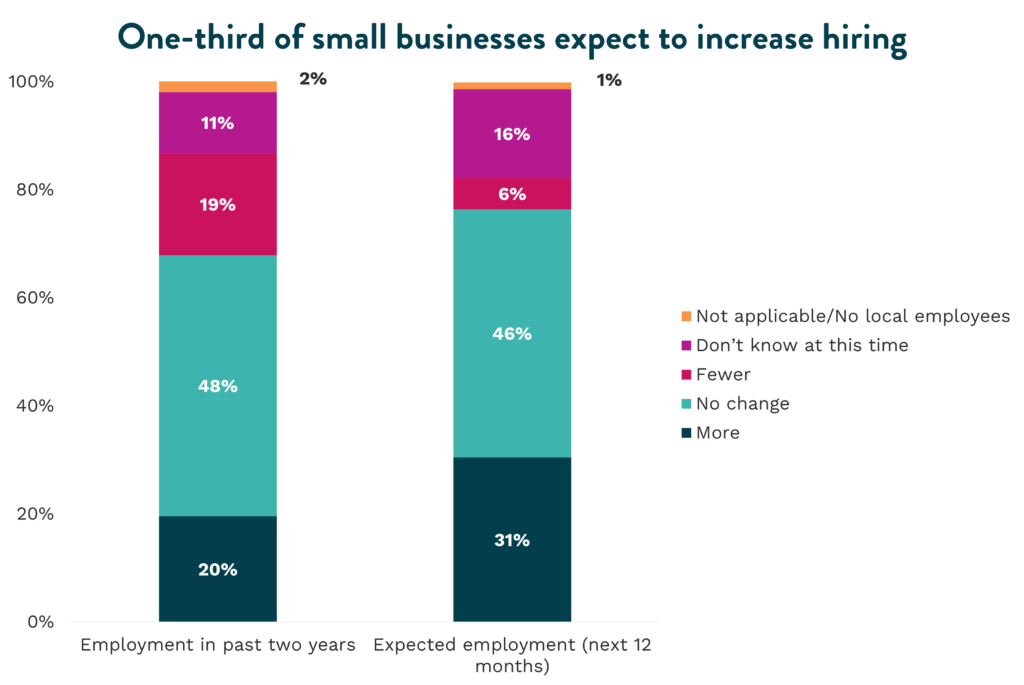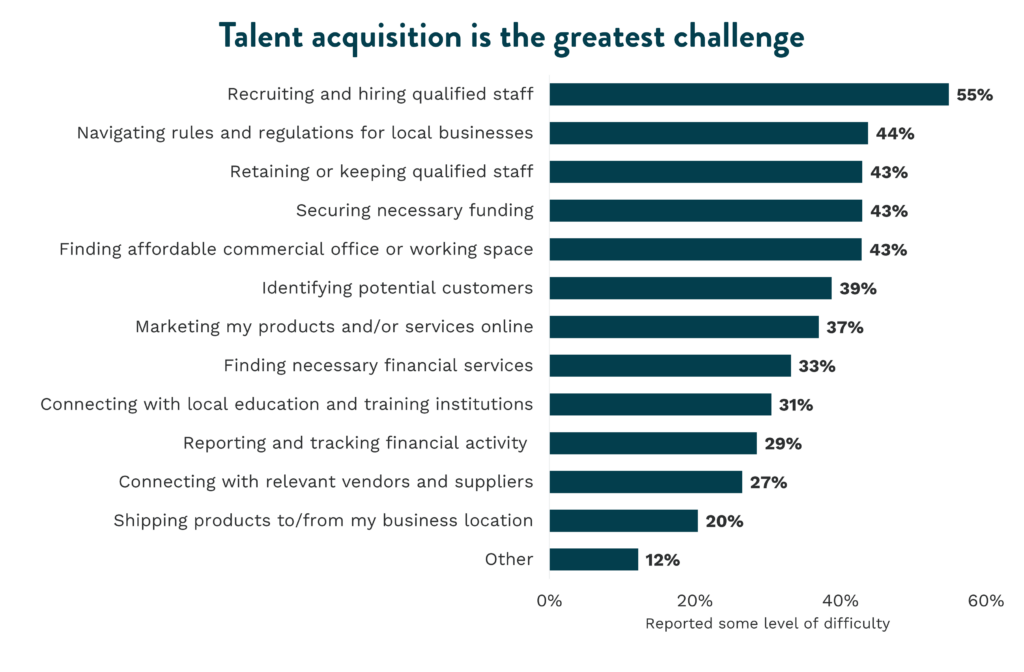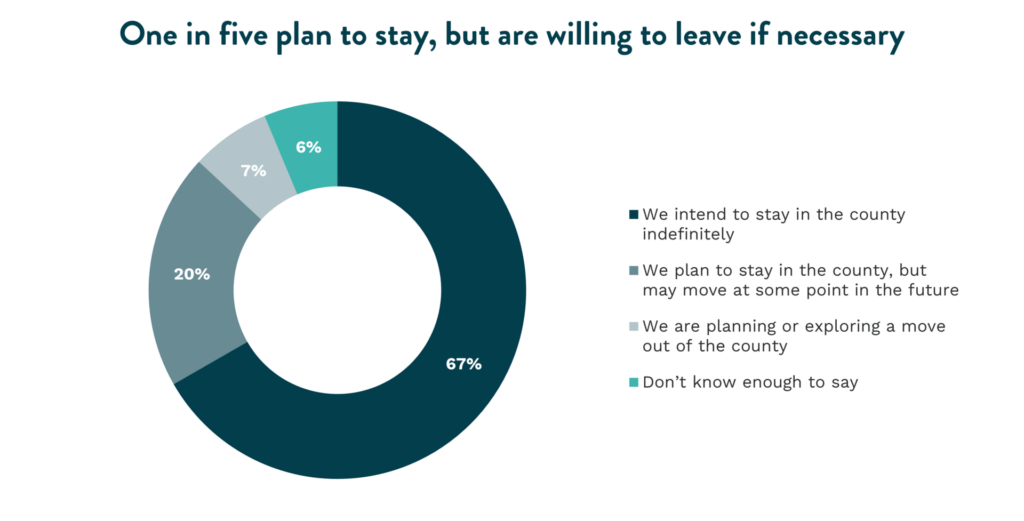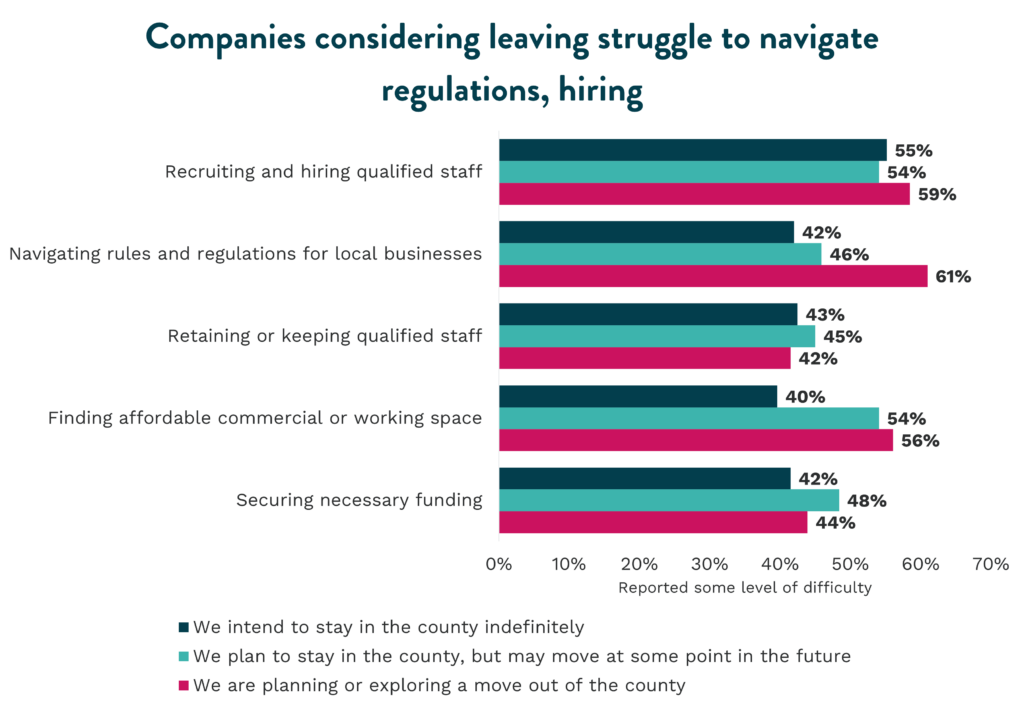Small businesses are one of the cornerstones of San Diego’s regional economy. More than 61 percent of all jobs in the region are within a business that employs less than 100 employees, which is nearly double the national average.
However, small businesses are also the most prone to economic downturns relative to their larger peers. The pandemic caused approximately half of all small businesses to face extended closures locally, with many shutting down permanently. On top of that, a job at a small business will pay 34 percent lower wages, on average, than a job at a larger business.
To better understand where small businesses currently stand and their evolving needs in this ever-changing business climate, EDC, San Diego & Imperial Valley Small Business Development Center (SBDC), and BW Research conducted a survey of small businesses across San Diego and Imperial Counties. This survey was done in partnership with SBDC to inform its network of advisors to best provide support and programming. Here’s what we learned:
expansion of workforce
Job growth for small businesses has been flat for the past two years. Nearly half of small businesses surveyed indicated no change in employment and an additional 19 percent reported a decrease in employment. This trend is applicable to small businesses in most industries. Businesses in food service, tourism, and hospitality industries experienced less of a decline in employment since the end of 2021. This could be due to pandemic-induced tourism slowdowns when travel was limited. On the other hand, firms in the construction and design industries reported an expansion in employment 12 percentage points above the average, reflecting the region’s investment in infrastructure and development.
However, when asking small businesses about their near-term outlook, nearly one out of three expect to increase hiring over the next 12 months. Firms in the high-paying innovation economy (life sciences, emerging technologies, information, and communication technologies industries) stood ahead of the pack, with 43 percent expecting to add to their workforce. Additionally, 48 percent of small businesses that have a customer base that expanded outside the region had a positive outlook, compared to only 23 percent of firms that serve customers primarily in the region.

Hiring is the greatest challenge
The most significant challenge that small businesses face is recruiting and hiring qualified staff. More than half (55 percent) of small businesses reported some level of difficulty in talent acquisition. Mid-sized (10 to 24 employees) and larger small businesses (25 to 100 employees), as well as firms with more years of experience under their belt, struggle more with finding talent relative to micro businesses (two to nine employees) and younger firms. As a firm grows over time, expansion in its workforce is necessary, but finding the right people to fill roles is hindering most small businesses. This becomes more of a problem when considering that larger businesses are competing for the same talent. Read more about San Diego’s talent outlook on our talent dashboard.
Other significant challenges for small businesses include navigating rules and regulations (44 percent), retaining qualified staff (43 percent), finding affordable commercial or working space (43 percent), and securing necessary funding (43 percent). Younger small businesses are more likely to have difficulties with issues in the early stages of a business like finding an affordable working space or securing necessary funding. More experienced firms are more likely to have difficulties attracting and retaining talent as they look to expand.

Relocation risk
Of small businesses surveyed, seven percent revealed they are planning or exploring a move out of the region. Additionally, 20 percent indicated that although they plan to stay in the region for now, they have considered a move out of the region at some point in the future. When looking at retention by industry, the distribution and logistics industry has the highest proportion of firms planning to leave the region. Furthermore, 35 percent of responding firms in the high-paying, fast-growing innovation economy industries have considered leaving the region—the highest among all industry groups.

Those small businesses that have considered or are planning to leave the region have more difficulty with facets of doing business. Three in five small businesses that are planning to move out of the county report difficulty in navigating these rules and regulations. More specifically, labor regulations, permitting, and taxes are the most common issues that firms run into. Finding an affordable working space and securing funding are also challenges more commonly found in firms that are likely to leave.
Small businesses that rated local programs and resources as a weakness are more likely to leave the region than those that rated it as a strength. Connecting these small businesses to the right resources can help alleviate the challenges they are facing. Greater and more targeted awareness of what is currently available to help small businesses, like EDC business services and SBDC services, could help.

Tap into local resources
If you are a small business in need of assistance, connect with SBDC and its network of advisors, and access on-demand training and live workshops. For additional resources to help your business grow see EDC’s Doing Business Here page. Additionally, learn more about EDC’s Anchor Institution Collaborative, which aims to increase small business resilience by connecting them to large buyers in the region.